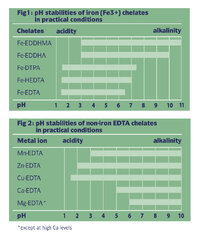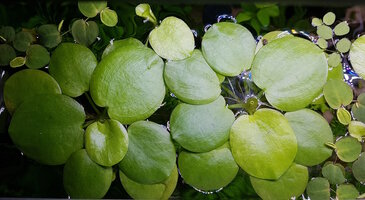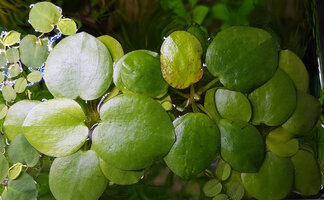Well we only know by virtue of their ingredients list, which all seem to include Mn
Sure, but including it doesnt mean its the optimal amount for our use.
Im finding myself starting to disagree more with
@dw1305 when he says his customary line of ~ traces being down to the difference between "some" and "none".
In my experience that is much too diffuse and broad a range if one is looking for really nice plant growth.
- but I get your point, we don't know exactly how much Mn plants actually need - I'm guessing it's substantially less than Fe though?
I wouldnt say substantially less, Marschner has it as a 2:1 Fe:Mn ratio (which is of course not just a fashionable term but a serious source of in-depth knowledge of plant mineral requirements)
(Technically I think the numbers themselves are from Epstein, but thats not super important).
As Maq has pointed out, we have to remember that "what the plants need" and "what we need to dose to get the plants what they need",
can be two different things.
Perhaps especially when dealing with a plant growing completely under water. They dont have to be different, but they could be.
How much Mn were you dosing per week when you got the chlorosis issue?
I will have to check and get back to you on that 🤔 I think the issue persisted over quite a range of different dosing regimes / amounts, which is why it took a long time to figure it out.
From my notorious memory just dosing full EI (0.5) of a typical trace blend was not working, and again I assume that has to do with there also being a lot of Iron present.
The standard thinking of "just dose more of everything" doesnt quite seem to apply here.
We also know about the oxidation of iron (and the performance of its various chelates) in differing pH points which affects it's availability. I've not read of Mn suffering the same issue?

Good point, MnEDTA should be pretty stable in higher PH, so for fully chelated mixtures we shouldnt need to worry too much about losses from that.
At least not nearly as much as FeEDTA might when its used in slightly higher* PH aquariums. (*Higher than common hydroponic practices it seems).
Im guessing most people are using chelated trace mixes, I think unchelated ones might be less common, but there are some who use it.
But if someone is already at a point where they are deciding whether or not to use chelates, they would hopefully already have an idea of the differences that will mean for the practical application.
I daresay I've been researching these specific differences among aquarium plants rather diligently. And I must admit it's far from easy. There are some more variables beyond nutrition which may influence the results very significantly. Only some of these are under our control. The more targeted experiments I do the more I tend to be modest in interpreting my results. "This species grew well in conditions such and such. Period."
Very wise I think.
I missed more detailed information on various species' keeping in Christel Kasselmann's book. At the same time I acknowledge that it's a very complex, difficult task, really.
I bet if there were any, you would be disagreeing with it anyway 😘

Yes, but cultures behave differently than nature. Some habitats may be free of pines not because pines can't grow there at all but because they can't proliferate there. Par example, their seedlings can't stand the local competition. Bur if you re-plant a young pine there from elsewhere, it may live there quite happily.
Our tanks are cultured collections. Left without care, they would develop into monocultures or a collection of very few species. Yet with regular care, we can keep much broader assortment of plants together.
True. I think my tank would become 100% Hydrocotyle tripartita quite rapidly, that is if the Rotalas dont beat it to the finish line first

Like I said above, the correct ratio depends on a list of conditions. A ratio 4 : 1 looks good to me for pH = 6.5, but not for 5.5. Of course, it's also species specific.
I really love this insight, thats such a good point. With Darrel's link to the Blueberry fertilizer it just drives the point home completely. Definitely something I will keep in mind.






